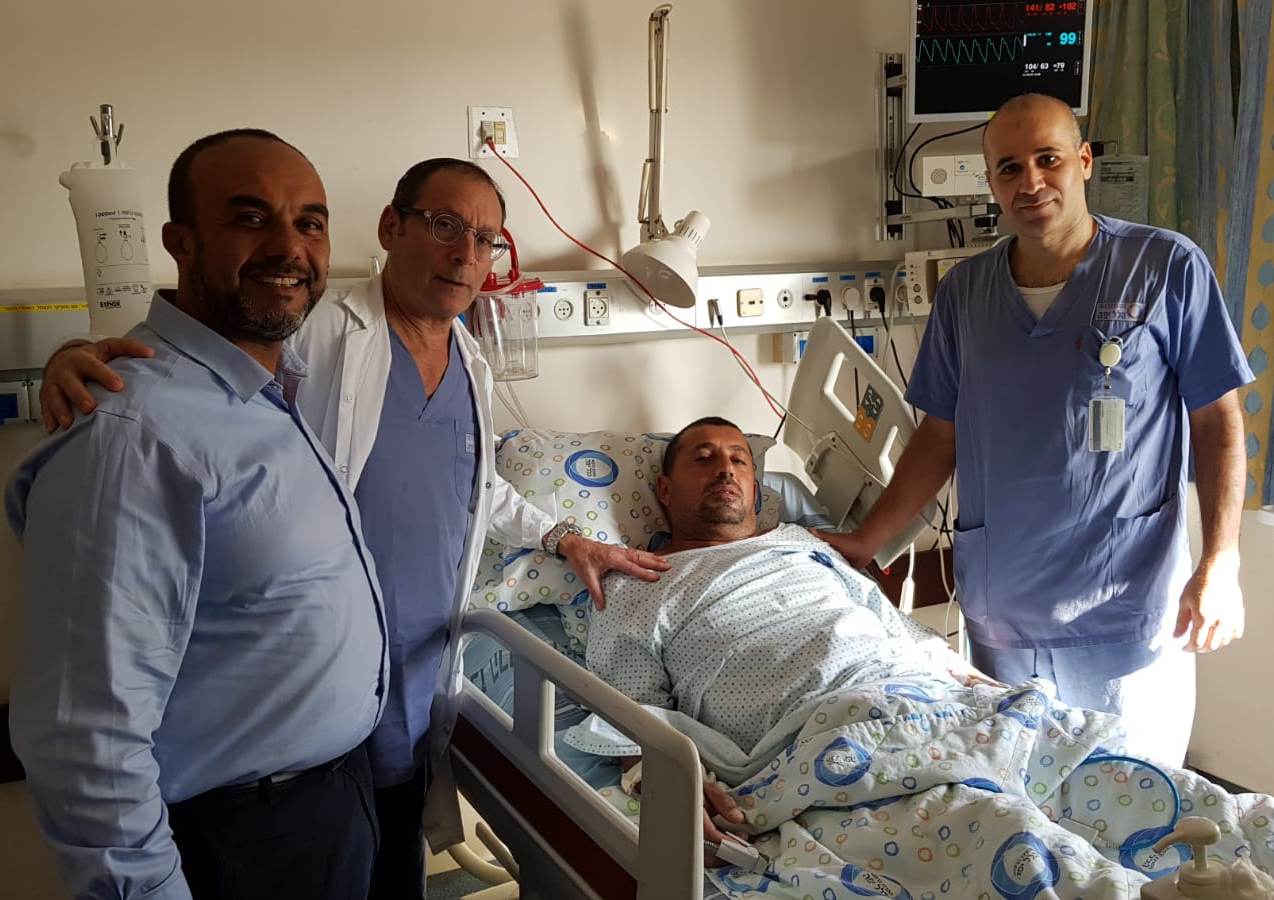It wasn’t your ordinary catheterization, one of the thousands performed every year at Hillel Yaffe Medical Center or even in Israel. This past week, a catheterization using a special and sophisticated method was performed for the first time at Hillel Yaffe. It requires strong expertise and a combination of techniques. This method is known as “retrograde.” It is a breakthrough method, as it may prevent the need for bypass surgery. Very few professionals worldwide have been trained in this method, given its complexity and the level of expertise needed.
The standard approach today in cases where there is stenosis or blockage of a coronary artery is to reach the blockage through the obstructed artery and to release it using a balloon and/or through placement of a stent. In complex situations, where there is 100% blockage, this method does not always work, and sometimes the patient is referred for bypass surgery.
In the case of Zuhadi Abu Nada, 47, who came into the Hillel Yaffe Emergency Room with serious chest pain, this kind of complicated catheterization was necessary. Abu Nada had already had a heart attack, following which his heart function deteriorated.

From right to left: Dr. Rami Abu Pane, the patient Zuhadi Abu Nada, Director of ICCU
Prof. Simcha Meisel, and Head of the Jasr a-Zarka Council Amash Murad
When he arrived at Hillel Yaffe, Abu Nada was rushed into the catheterization room, where a full blockage of a right dominant artery was found. After several attempts to open the blockage using the standard method, the catheterization staff, Dr. Aaron Frimerman, Catheterization Unit Director, and Dr. Rami Abu Pane, who recently returned from training on this method, decided to try a different technique. The two decided to perform the procedure using the retrograde approach and to enter through the “back door,” meaning to reach the blocked right artery from the opposite direction, namely through the open left artery, a method that requires a very high level of expertise and very complex control.
“This was a serious case of a young man who suffered very a very complex blockage along with backgrounded diseases and poor heart function. We saw that there was a chronic complete blockage and, after several failed attempts at opening it, we were forced to use the retrograde method. In other words, we entered through the open artery on the opposite side, which feeds the blocked artery through small arterioles. That was how we were able to open the blockage using an indirect method,” said Dr. Abu Pane.
Dr. Frimerman added, “We know that we couldn't take the risk of having the patient undergo bypass surgery given his complex health issues, which is why we did everything we could to open the blockage.”
Opening chronically blocked arteries is a very complicated procedure, which requires skills and a sophisticated technique. Prof. Ariel Roguin, Heart Institute Director, said, “This is indeed a unique method, which very few people in Israel and worldwide know how to perform. As part of the expansion of the Heart Institute, we will add another catheterization room and perform complicated catheterizations, which will respond to the needs of patients who suffer from chronic complicated blockages.”











.jpg?BannerID=39)

